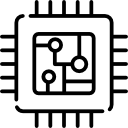Category: People
Team HART
Team info
Clusters
We are looking for new team members with the following skills
We offer opportunities for all students! We seek a wide range of talents in areas such as electronics, textiles, software development, 3D printing, research, marketing, business and beyond. Don't be afraid to shoot us a message via our socials or connect@teamhart.nl!
Contact usThe Mission
Team HART's mission is to advance the field of human augmentation by generating reproducible knowledge through research, developing applications like our visual impairment solution and raising awareness in academia and society. We aim to bring human augmentation into the public conversation, highlighting the potential of non-invasive technologies to enhance human capabilities and ensuring a comprehensive understanding of its implications for the well-being of society. We believe in freeing the human experience from sensory limitations and empowering individuals to express themselves in the ways they desire.
The Challenge
Individuals with visual impairments face challenges in everyday life due to the inability to gauge non-verbal expressions of others, particularly through facial expressions which are universal and convey emotions. Nonverbal communication cues, such as listening, looking, moving, and reacting, play a crucial role in building trust, clarity, and rapport in communication. However, for individuals with visual impairments, the misalignment between verbal and non-verbal cues can generate tension, mistrust, and confusion. This highlights the need for a solution that enables individuals with visual impairments to access and interpret non-verbal cues to enhance their social interactions and overall well-being.
The Solution
Our solution is a wearable haptic sleeve that streams facial expressions of conversation partners to the user, allowing individuals with visual impairments to "see" facial expressions through haptic feedback. With 24 vibration motors creating distinct vibrational patterns, the sleeve communicates non-verbal cues via AI-powered facial expression recognition. This technology promotes inclusive communication, allowing users to feel emotions on their forearm and better understand social cues. This enhances their social experience and improves non-verbal communication in a more inclusive manner.

